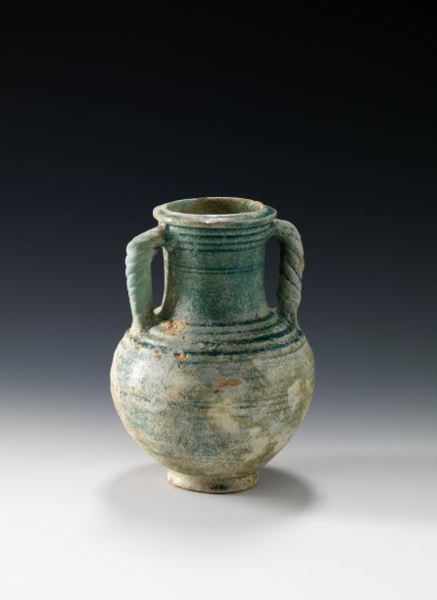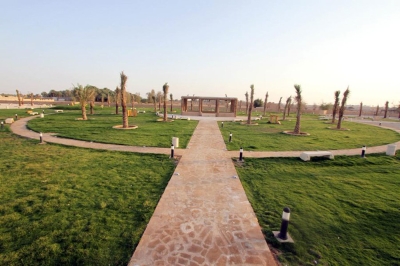

The Archaeological Ceramic Vase is a circular artifact made of coarse red clay. It was discovered in the archaeological Qaryat al-Faw, located at the intersection of ad-Dawasir Valley and Tuwaiq Mountain Range in Wadi ad-Dawasir Governorate, Riyadh Province, the Kingdom of Saudi Arabia.
Description of the vase
The archaeological ceramic vase features a long neck positioned at the center of the upper part of the jar. It has a rim with outwardly extending lips, and an additional set of lips located midway along the rim. Two braided handles are attached to the jar’s shoulders at a perpendicular angle and connect to the neck just below the rim’s edge. Traces of green glaze remain visible on the neck of the vase, while the body shows partial erosion, leaving scattered patches on the surface. The vase’s shoulders are encircled by four ridges, with depressions between them coated in a dark green glaze.
Dimensions of the vase
Rim diameter: 10.2 cm.
Base diameter: Eight cm.
Height: 23.3 cm.
History of the vase
The ceramic vase dates back to the period between the third century BCE and the third century CE. It was used for storing liquids.
The discovery of the ceramic vase is one of the outcomes of archaeological surveys and excavation efforts conducted by the Antiquities and Museums Sector in Saudi Arabia over recent years. It reflects the contributions of Saudi archaeologists, scientific missions, and joint research teams.
The archaeological ceramic vase is registered under the number 13 F 28.
The vase at the Louvre
The ceramic vase is exhibited in the Archaeology Department Museum at King Saud University in Riyadh. It was one of the artifacts selected to participate in the Saudi Archaeological Masterpieces Through the Ages Exhibition, held at the Louvre Museum in the French capital, Paris, in 2010. The exhibition featured three hundred original pieces made of various materials and spanning different periods. These artifacts, originating from various regions of Saudi Arabia, were categorized chronologically into three groups: prehistoric artifacts, pre-Islamic artifacts, and Islamic artifacts.
Significance of the vase
This vase indicates connections with centers of Hellenistic civilization in the Levant, such as Antioch and Dura-Europos, where similar glazed ceramic vases with braided cylindrical handles have been discovered.
Related quizzes
Related articles
